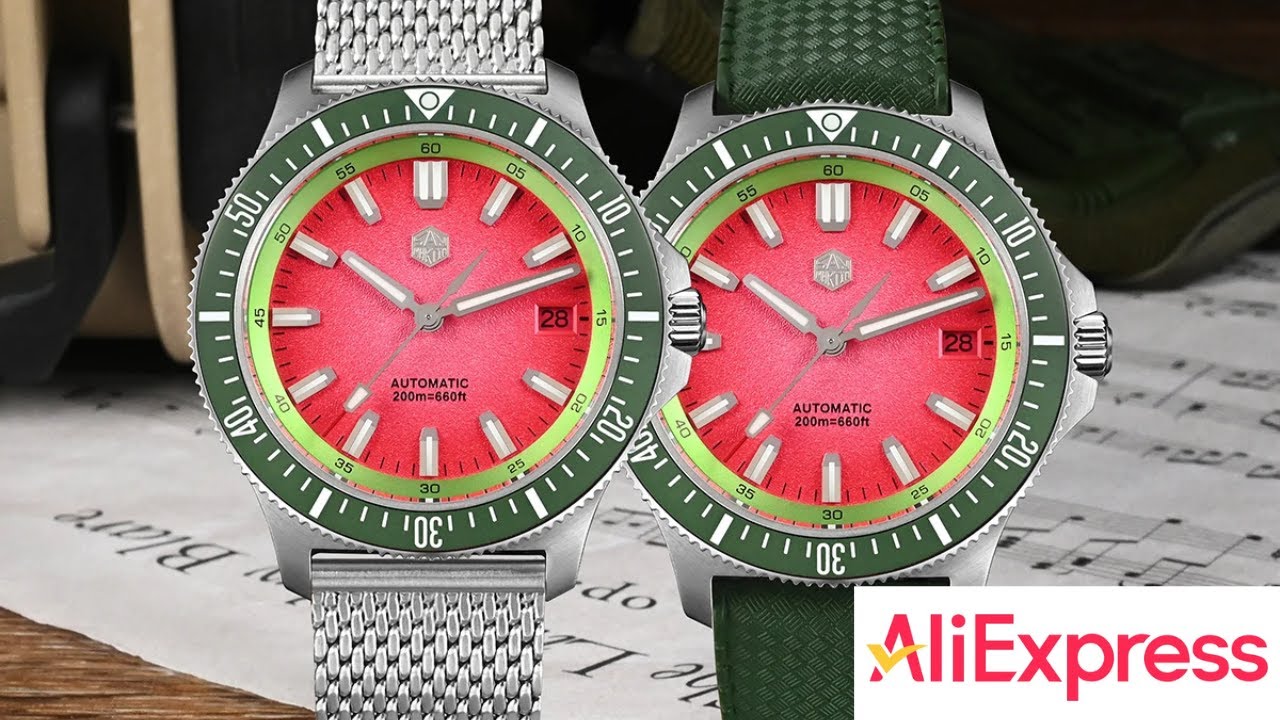How does the finishing of San Martin Watch compare to entry-level Swiss brands?

In the world of horology, the finishing of a watch can make a significant difference in both its aesthetic appeal and overall quality. As consumers increasingly seek timepieces that offer excellent craftsmanship at reasonable prices, brands such as San Martin have emerged as compelling alternatives to entry-level Swiss watch brands. This article delves into how the finishing of San Martin watches compares to their Swiss counterparts, exploring detail-oriented aspects, craftsmanship, and value for money.
Understanding Watch Finishing
The term “finishing” in watchmaking refers to the various techniques employed to enhance the appearance, durability, and performance of a timepiece. Finishing encompasses processes such as polishing, brushing, and coating, and involves meticulous attention to detail. A watch’s finishing can influence not just its visual appeal, but also its resistance to wear and tear.
San Martin Watches: An Overview
San Martin is a Chinese watch brand known for its dedication to quality and precision. While it is not a Swiss brand, San Martin has carved out a niche in the affordable luxury segment. The brand focuses on producing timepieces that combine modern design with traditional craftsmanship, often inspired by iconic models from high-end Swiss brands.
- Price Point: San Martin watches are typically more affordable than their Swiss counterparts, making them accessible to a wider range of consumers.
- Quality Materials: San Martin primarily uses high-grade stainless steel, sapphire crystals, and reliable movements, ensuring a high standard of quality.
- Innovative Designs: The brand often incorporates popular design elements from luxury watches while maintaining its unique identity.
Key Finishing Techniques in Watchmaking
When comparing the finishing of San Martin watches to entry-level Swiss brand watches, it’s essential to understand some of the key finishing techniques employed in watchmaking:
1. Polishing
Polishing is a critical step in producing a high-quality finish. It involves smoothing the surfaces of the watch case and bracelet to give them a reflective shine.
- San Martin Finishing: San Martin employs a combination of polished and brushed finishes, creating an attractive contrast that elevates the overall look of the watch.
- Swiss Brand Finishing: Entry-level Swiss watches also use a combination of finishes. However, some brands may prioritize mass production over intricate finishing, resulting in a less personalized appearance.
2. Brushing
Brushing is another important technique, which provides a satin-like finish on the surfaces of the watch, giving a more understated elegance.
- San Martin Finishing: Many San Martin models feature expertly brushed surfaces that add depth and character to the timepieces.
- Swiss Brand Finishing: While some entry-level Swiss watches have commendable brushing, they may not achieve the same level of consistency and quality that San Martin offers.
3. Beveling
Beveling is a technique used to create sharp edges that reflect light beautifully. It’s a hallmark of high-quality watch finishing.
- San Martin Finishing: San Martin pays attention to beveling, often offering polished edges that enhance the sophistication of their designs.
- Swiss Brand Finishing: Entry-level Swiss brands may sometimes overlook thorough beveling, focusing instead on simple design aesthetics.
Quality of Movements
The quality of a watch’s movement is as important as its finishing. A well-finished watch is only as good as the mechanism that powers it. Here’s how San Martin movements stack up against entry-level Swiss movements:
1. Movement Types
- San Martin Movements: San Martin predominantly uses Seiko and NH movements, known for their reliability and accuracy, adding to the overall quality of the watch.
- Swiss Movements: Entry-level Swiss watches often feature quartz movements or basic automatic movements that may lack the robustness and convenience characteristic of higher-end alternatives.
2. Chronometer Certification
Chronometer certification denotes that a movement has passed rigorous precision tests.
- San Martin Certification: While not all San Martin watches are chronometer-certified, the brand’s commitment to quality means that many of its models achieve notable accuracies.
- Swiss Certification: Although entry-level Swiss brands may boast chronometer certification, the cost of such a certification can sometimes impact the quality of the watch’s finishing.
Real-World Usage and Durability
The practical use of a watch is another critical area where finishing plays a role. A beautifully finished watch must also stand up to daily wear and tear.
1. Scratch Resistance
A watch’s durability is often a function of its components.
- San Martin Scratch Resistance: With sapphire crystal glass and robust stainless steel cases, San Martin watches are designed to resist scratches and damage effectively.
- Swiss Scratch Resistance: Entry-level Swiss watches may also feature sapphire crystals but may not always use high-grade materials, potentially leading to quicker wear and tear.
2. Water Resistance
Water resistance is crucial for wearability.
- San Martin Water Resistance: Many models boast solid water resistance ratings, making them suitable for various activities, from swimming to everyday wear.
- Swiss Water Resistance: Although many Swiss entry-level watches also advertise decent water resistance, some may lack the rigorous testing that San Martin subjects its models to.
Customer Satisfaction and Reviews
Customer feedback plays a significant role in comparing watch brands. Understanding the experiences of others can guide potential buyers.
1. San Martin Reviews
San Martin watches generally receive high ratings from customers who appreciate the brand’s blend of quality, design, and affordability.
- Quality Feedback: Many users commend the intricate finishes and overall build quality that rivals higher-priced luxury watches.
- Value for Money: Customers often express satisfaction with their purchase, citing the durability and aesthetic appeal of the watches.
2. Swiss Brand Reviews
The reception of entry-level Swiss brands can sometimes be mixed.
- Quality Concerns: Some consumers report that these watches, while stylish, can exhibit variations in quality and finishing.
- Brand Perception: Swiss brands carry heritage and prestige, which can influence buyer perceptions, but may not necessarily reflect the quality of entry-level offerings.
Price Comparison and Value
Price is a crucial factor when choosing between San Martin and Swiss watches. Here’s a detailed look at how they compare across different price points.
1. San Martin Pricing
San Martin watches typically range from $200 to $500, offering a variety of styles and functionalities, including dive watches and classic designs.
- Affordability: With reasonable pricing combined with quality craftsmanship, San Martin represents strong value in luxury timepieces.
- Retail Options: Available through various online retailers and official brand sites, buyers can access models easily.
2. Entry-Level Swiss Pricing
Entry-level Swiss brands usually start around $300 and can exceed $1,000, with the price often deterring potential buyers seeking value.
- Price Justification: While the history and branding of Swiss watches can justify the costs, the finishing quality may not always align with the higher price points.
- Resale Value: Swiss brands may retain resale value better, but this often varies significantly depending on the specific model and market demand.
Final Thoughts: Choosing Between San Martin and Entry-Level Swiss Brands
When deciding between San Martin watches and entry-level Swiss brands, potential purchasers should consider their preferences for style, quality, finishing, and budget. While both offer unique advantages, San Martin stands out for its exceptional finishing, high-quality materials, and affordability.
In conclusion, the overall finishing of San Martin watches often exceeds that of many entry-level Swiss brands. With a focus on craftsmanship and value, San Martin presents an attractive alternative for watch enthusiasts seeking quality without breaking the bank.

When it comes to the finishing of San Martin Watches, they stand out impressively when compared to entry-level Swiss brands. With meticulous craftsmanship and attention to detail, San Martin ensures high-quality components and finishes that rival, and often surpass, those found in lower-priced Swiss options. The use of premium materials, combined with precision assembly techniques, allows San Martin to create timepieces that not only look stunning but also provide reliable performance. For watch enthusiasts seeking value without compromising on quality and aesthetics, San Martin is a compelling choice that brings exceptional craftsmanship and sophistication to the table.
FAQ
1. What materials do San Martin Watches use in their finishing?
San Martin Watches utilize high-quality materials such as stainless steel, sapphire crystal, and durable ceramics. These materials contribute to the overall durability and aesthetic appeal, similar to those used in reputable Swiss brands.
2. How does the craftsmanship of San Martin compare to entry-level Swiss brands?
San Martin is known for its meticulous craftsmanship and attention to detail, often exceeding the standards of entry-level Swiss brands. Each watch is assembled with precision, ensuring high-quality finishing that resonates with watch enthusiasts.
3. Are San Martin Watches reliable compared to Swiss brands?
Yes, San Martin Watches are designed for reliability and accuracy. They feature Swiss movements and are tested for performance, making them a trustworthy choice that can compete with entry-level Swiss counterparts.
4. What aesthetic features make San Martin Watches appealing?
San Martin Watches boast a blend of classic and modern designs with various dial colors, finishes, and strap options. This aesthetic versatility allows wearers to express their style while ensuring a refined look.
5. Is it worth investing in a San Martin Watch over an entry-level Swiss brand?
Investing in a San Martin Watch offers exceptional value for money. With superior craftsmanship, appealing designs, and premium materials, San Martin provides an experience that rivals traditional Swiss brands at a more accessible price point.
Conclusion
In summary, San Martin Watches present a strong alternative to entry-level Swiss brands, showcasing superior finishing and craftsmanship. Their commitment to quality and design ensures that customers receive a timepiece that not only meets their functional needs but also elevates their style. For those looking to invest in a watch that seamlessly balances luxury with value, San Martin represents an excellent choice, making it a wise option for enthusiasts and newcomers alike.




